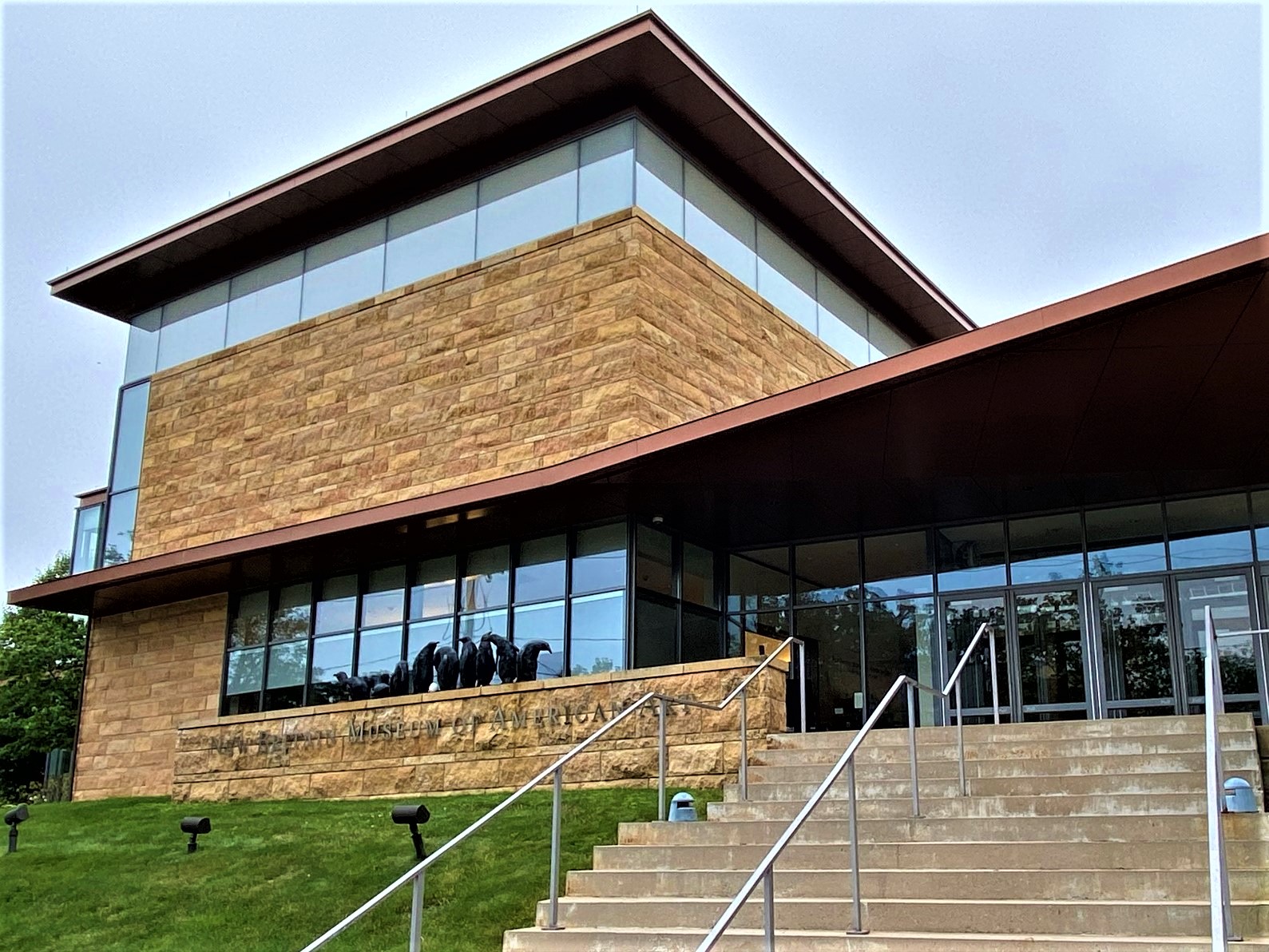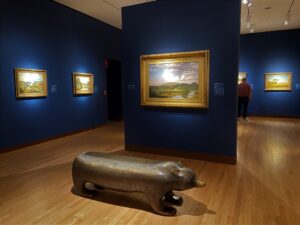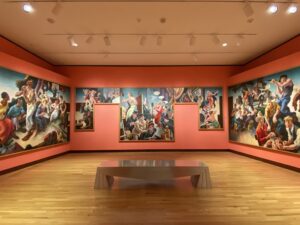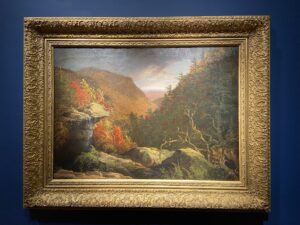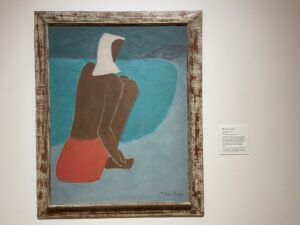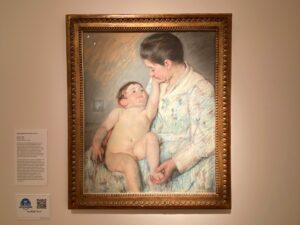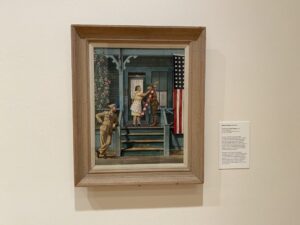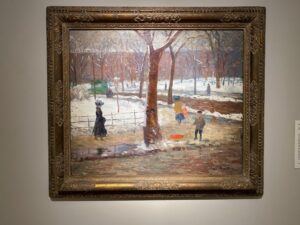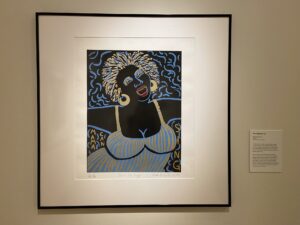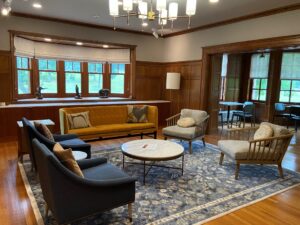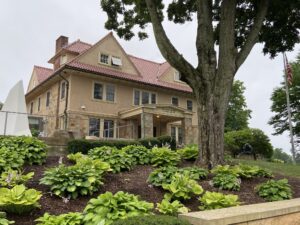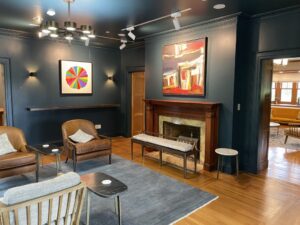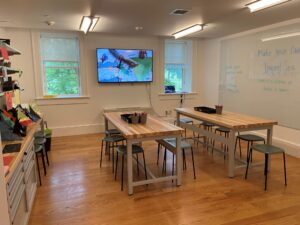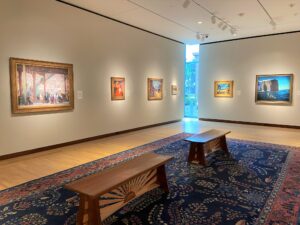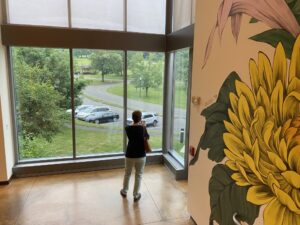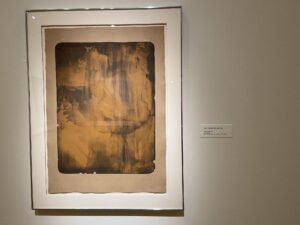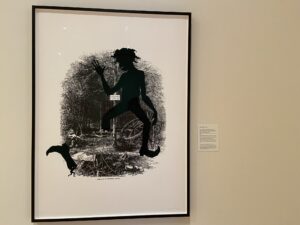Celebrating the artistic bounty of a small state that’s rich in both natural beauty and culture, the Connecticut Art Trail has grown to over 20 members since its start in 1995. Besides famous institutions like Hartford’s Wadsworth Atheneum and New Haven’s Yale University Art Gallery, the trail promotes lesser-known gems like Weir Farm National Historical Park in Wilton, home to artists including Impressionist J. Alden Weir. Well worth a visit now is the New Britain Museum of American Art (NBMAA), which shines with a nationally recognized collection of American art and consistently ambitious exhibitions and acquisitions. This fall, “Strict Beauty: Sol LeWitt’s Prints” (September 17, 2021 through January 9, 2022) presents over 250 works, the most comprehensive show of prints by the Hartford-born conceptual artist, who was raised in New Britain and took art classes at the NBMAA.
Although New Britain’s population has never exceeded 83,000 (it’s now 74,000), this city 13 miles south of Hartford prospered from the mid-19th century on as a base for Connecticut’s once-thriving manufacturing industries. The museum has its origins in the New Britain Institute, founded in 1853 to help educate the city’s growing immigrant communities. In 1937 the growing art collection moved to a building donated by a local philanthropist (the Landers House), in a neighborhood near Walnut Hill Park, designed by Frederick Law Olmsted. A $26 million expansion in 2006 brought the NBMAA into the 21st-century with new gallery and education space, and museum holdings now number close to 9,000 artworks.
Former director and CEO Min Jung Kim, who left in summer 2021 to head the Saint Louis Art Museum, focused on recalibrating exhibitions and the collection to reflect the diversity of American national identity and art. The 2019 exhibition “The Beyond: Georgia O’Keeffe and Contemporary Art,” organized by Crystal Bridges Museum of American Art, increased the NBMAA’s attendance by 50 percent to over 88,000. Over the past year, in honor of the 100th anniversary of the passage of the 19th Amendment guaranteeing women the right to vote, 2020/20+ Women @ NBMAA presented seven major exhibitions focusing on female artists including Kara Walker, Anni Albers, Shantell Martin, Helen Frankenthaler, and, currently, Jennifer Wen Ma. In addition, the museum acquired 18 works by noted women artists such as Ana Mendieta, Faith Ringgold, Betye Saar, and Kara Walker.
Exploring the NBMAA
One pleasure of visiting the museum is viewing high-quality American art from throughout the country’s history in a relatively compact, bright, modern space. Even the gallery benches are decorative, each a work of art in itself. Presenting art chronologically, the galleries include outstanding colonial and Federal-era portraits by Ralph Earl, John Singleton Copley, and Gilbert Stuart, and 19th-century Hudson River School landscapes by Thomas Cole, Asher B. Durand, and Frederic Church. Among the 19th-century works are post-Civil War paintings by Winslow Homer and Thomas Eakins. American Impressionists are represented by Mary Cassatt, J. Alden Weir, and Childe Hassam, among others.
The NBMAA focused on acquiring American art in part because it was more available and less expensive, and it has continued to acquire works by up-and-coming artists. In the early 20th century, taking advice from the Macbeth Gallery, the museum purchased dozens of works by realist artists like Robert Henri and William Glackens, known as the Ashcan School. Modern and contemporary art galleries in the museum present works by artists as varied as Jacob Lawrence, Milton Avery, Helen Frankenthaler, Chuck Close, Isamu Noguchi, and Dan Flavin.
Several features of the NBMAA deserve a callout: one gallery showcases the five large, colorful murals of The Arts of Life in America by Thomas Hart Benton, painted in 1932 during the Great Depression and reflecting aspects of everyday life from music and sports to unemployment and crime. The Low Illustration Collection contains more than 2,000 illustrations from magazines and books, and a gallery displays selections by masters like Howard Pyle, N. C. Wyeth, and Norman Rockwell. Finally, in 2021 the NBMAA opened renovated spaces in the Victorian-style Landers House with the Stanley Black & Decker Makerspace for hands-on art activities; a library; and several elegant wood-paneled rooms that serve as lounges and spaces for exhibitions, including a current one with New Britain–associated art and artists such as Grace Vibberts and Sol LeWitt.
The museum’s mission includes welcoming the entire community, and in 2019, more than 10,000 students visited from 54 cities and towns across Connecticut. Over 6,500 adults participated in studio classes, workshops, and other programs that year. Talks and concerts are part of NBMAA programming, and the Covid-19 pandemic has accelerated the development of digital resources such as lesson plans for teachers and virtual thematic tours. The museum also distributed 2,500 Creative Caring Kits, with instructions and some art supplies, to local families during the pandemic.
Exploring Further on the Connecticut Art Trail
In 1995, 10 art-focused Connecticut museums and historic sites partnered to form what was then the Connecticut Impressionist Trail, one of the state’s first tourism trails. The goal was to expand visibility and attendance at all sites and bring attention to the state’s role as a hub for American Impressionism. In the early 20th century, painters flocked to Connecticut to paint the countryside, forming art colonies like the one centered in Old Lyme at Florence Griswold’s boardinghouse, now the Florence Griswold Museum. That museum was one of the original trail members, along with the NBMAA.
In 2005, the trail expanded to become the Connecticut Art Trail, including museums and historic sites focusing on art from ancient works to the most contemporary collections, with pieces from around the world. Today 22 members and two affiliates make up the trail, with members in five regions, making it easy to plan a trip: Fairfield County, the Litchfield Hills, Greater New Haven, River Valley, and Mystic Country. The Art Trail Passport offers further incentive: for $25 (a $90+ value), individuals can purchase a passport that offers entrance to all trail sites for one visit during a one-year period. Passports can be purchased online or at museum members (except for the Yale University Art Gallery).
A quick look at the list of members, beyond those mentioned already, shows the Art Trail’s variety and the members’ support for their communities. In Norwalk, the Center for Contemporary Printmaking is a printmaking facility equipped for all techniques as well as a gallery space with exhibits of historical and modern prints. On the other side of the state, the Lyman Allyn Art Museum in New London houses 17,000 artworks from around the globe and has a strong commitment to art education for children, including subsidies for field trips. Theodate Pope Riddle (1867–1946), one of the country’s first female architects, designed what is now the Hill-Stead Museum in Farmington, near Hartford, for her affluent parents. The Colonial Revival house showcases French Impressionist paintings and fine decorative arts, and Beatrix Farrand designed the Sunken Garden. It’s the site of cultural events from exhibitions to a noted poetry festival. All in all, the Art Trail can easily provide days of art discovery and enjoyment around Connecticut.
Side Dish
Offering a hearty taste of New Britain’s strong Polish heritage, Starapolska is a casual, local-favorite restaurant that dishes up delicious pierogi, blintzes, borscht, stuffed cabbage, kielbasa, and more, including daily specials. Diners who can’t decide can opt for the (enormous) Polish Platter assortment. At the NBMAA, the attractive Museum Café features salads, sandwiches, and pastries, including treats from New Britain–area businesses such as the Roly Poly Bakery.
Linda Cabasin is a travel editor and writer who covered the globe at Fodor’s before taking up the freelance life. She’s a contributing editor at Fathom. Follow her on Instagram and Twitter at @lcabasin.

